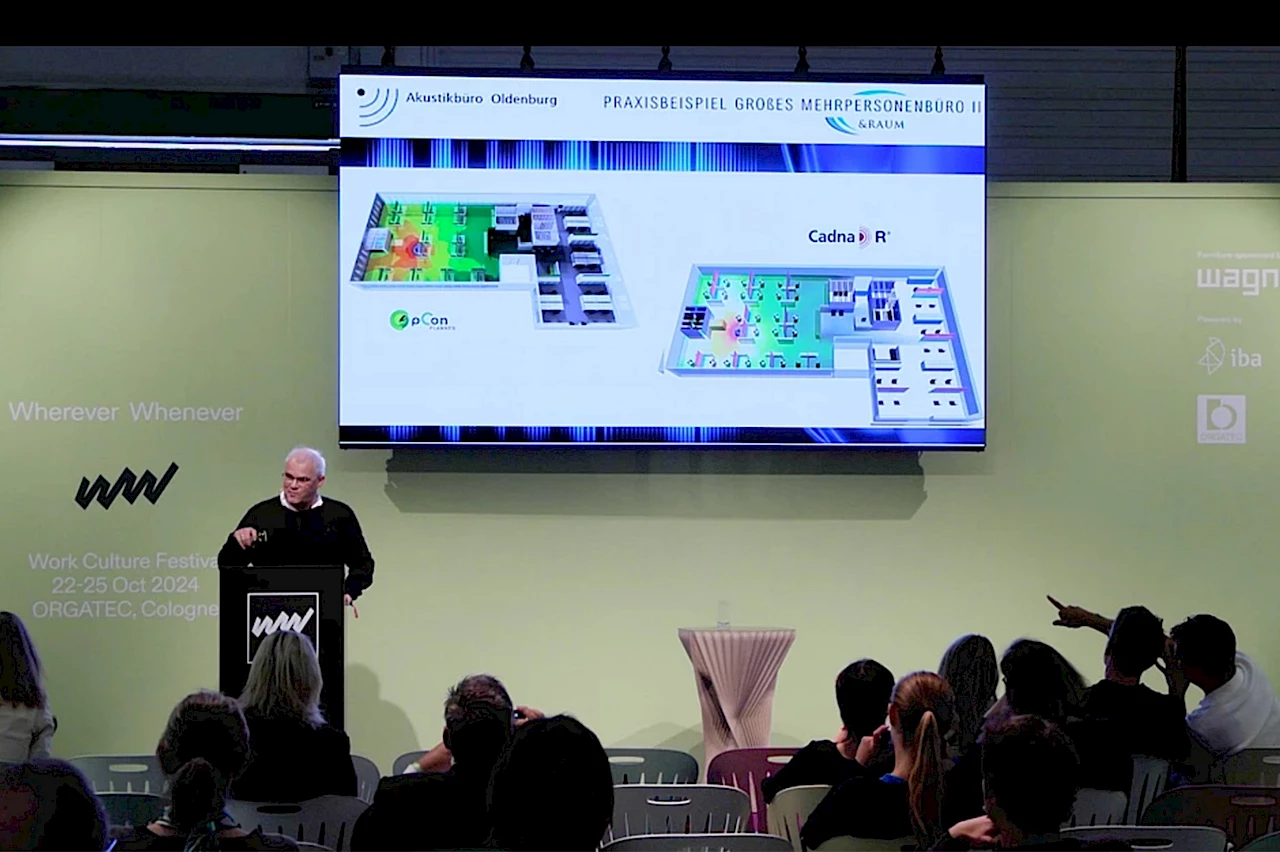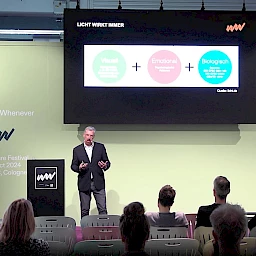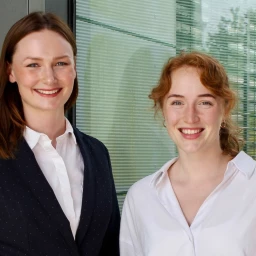During the Work Culture Festival, Dr Christian Nocke, owner of Akustikbüro Oldenburg, spoke about the importance of room acoustics in modern working environments. He discussed key legal principles as well as current standards and recommendations. Using practical examples and simulations, he showed how acoustic quality can be reliably assessed as early as during the planning phase.
The importance of room acoustics in modern working environments
Room acoustics play a key role in the planning of modern working environments, but are often only considered at a relatively late stage. Nocke, who works as a publicly appointed and sworn expert for noise immission, building and room acoustics and has been a member of DIN and ISO committees for many years, explained that acoustic quality influences concentration, health and cooperation, and is also defined in various regulations. Those who ignore such regulations not only risk dissatisfaction and a loss of productivity but often also being forced to implement expensive retrofitting measures.
Requirements for workspaces and reverberation times
Requirements in open-plan multifunctional offices in particular differ significantly depending on the activity involved. Shorter reverberation times, low background noise and effective shielding are crucial for focused work. Communication areas, on the other hand, tolerate longer reverberation times and controlled diffusion so that groups can speak without disturbing neighbouring zones. Nocke emphasized the fact that both too much and too little absorption can be problematic. For example, excessively long reverberation times impair speech intelligibility and automatically increase the volume level when people speak. Very short reverberation times, on the other hand, can increase the range of speech, which is rather undesirable in an open space.
Legal basis and standards
With regard to the legal basis, Nocke referred to various relevant regulations, including the Technical Rules for Workplaces (ASR A3.7) and the Assessment System for Sustainable Building (BNB). These contain requirements for acoustic design that must be taken into account by building owners and planners as a minimum standard.
For example, ASR A3.7 requires low noise rating levels for mental and intellectual activities, as well as workplaces without stressful background speech if cognitive tasks dominate. The BNB with its “Acoustic comfort” profile plays a role mainly in public building projects and can be relevant in terms of funding via the QNG Sustainable Building Certification (QNG). On the technical level, DIN 18041 “Acoustic quality in rooms” and VDI 2569 “Sound protection and acoustical design in offices” provide the framework. While the DIN defines use and volume-dependent target reverberation times, the VDI specifies which reverberation times are recommended for which type of office—for example to limit speech intelligibility over distance. Nocke categorized seeming contradictions between the documents: anyone planning in accordance with DIN/VDI will generally fulfil the requirements of ASR—a point supported by expert opinions from the acoustics community.
Physics meets perception: acoustics in everyday office practice
In his presentation, Nocke focussed in particular on the interaction between measurable room acoustics and subjective perception and made it clear that parameters such as reverberation time or sound level only explain part of any perceived disturbance. Moderators such as workload, thermal comfort, lighting, team culture, rules of cooperation and user behaviour also determine whether a space is experienced as pleasant or disturbing. This leads to the conclusion that a purely technical solution will be inadequate. Activities and usage contexts, such as the need for zones without background speech for focused work, or the need for areas with high communication density, must be taken into account in the planning process. Very long reverberation times impair speech intelligibility and automatically increase the volume level when people speak; very short reverberation times can increase the range of speech intelligibility (lower masking) and thus have an interfering effect. Target values and measures must therefore be consistently aligned with the respective usage scenario.
Plan early instead of retrofitting
Good office acoustics can be established when requirements are clarified at an early stage: which activities take place where, which target reverberation times apply and how can background speech be avoided in quiet zones? Answering these questions in the preliminary design phase and dovetailing acoustics with architecture, technical building services and interior design avoids the need for expensive compromises in the end. Simulations provide reliable information in advance on the choice of materials, ceiling absorbers/baffles, screen heights, furnishings and zoning. In the finished space, a measurement will ensure that planning and reality match. This type of quality assurance prevents over or undersizing and establishes clarity for clients and users. Where necessary, measures can then be adjusted, for example by adding sails, moving partitions or sharpening zone boundaries.
Rapid effect in existing buildings
Not every existing office needs a complete refit. Targeted interventions with a big impact are often sufficient: absorbent ceiling sails in areas with a lot of speech, acoustically effective partitions between workstations, a higher proportion of textiles in the right places or shelving that also absorbs sound. Functional separation is just as important—noisy zones such as coffee and printer areas should not be located near workstations for focused work. Well-damped, small retreat spaces for phone calls and video conferences noticeably reduce the strain on open spaces. The mixing and the distribution are decisive here. Porous absorbers address medium and high frequencies, while resonant systems target low frequencies. Combined, they create a broadband effect. Ceilings, selected wall surfaces, furnishings and zoning interlock so that communication remains possible in close proximity, without speech dominating over long distances.
To conclude: if you take acoustics into account from the outset and retrofit existing buildings in a targeted manner, you can achieve noticeably better working conditions at a manageable cost. The combination of clear target values, well-distributed absorption, effective screening, simulations and pragmatic usage rules makes offices reliably usable spaces for both concentration and collaboration—without aesthetic compromises and without subsequent cost drivers.







